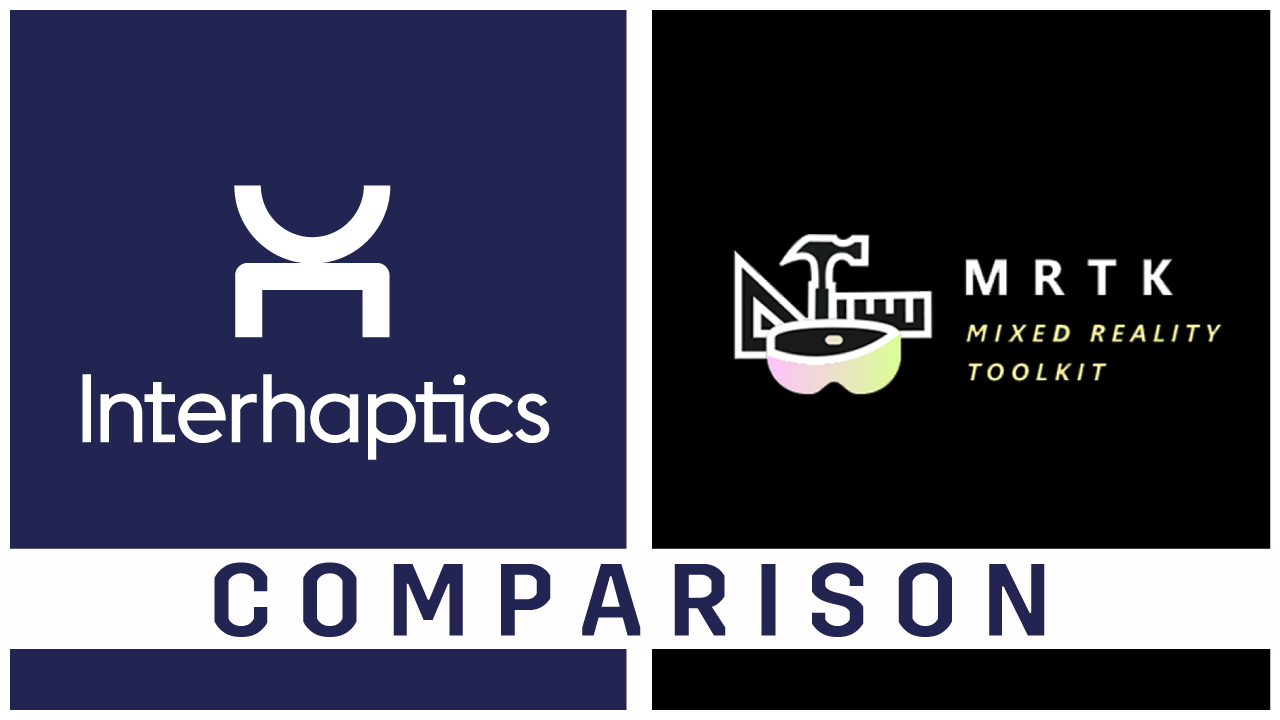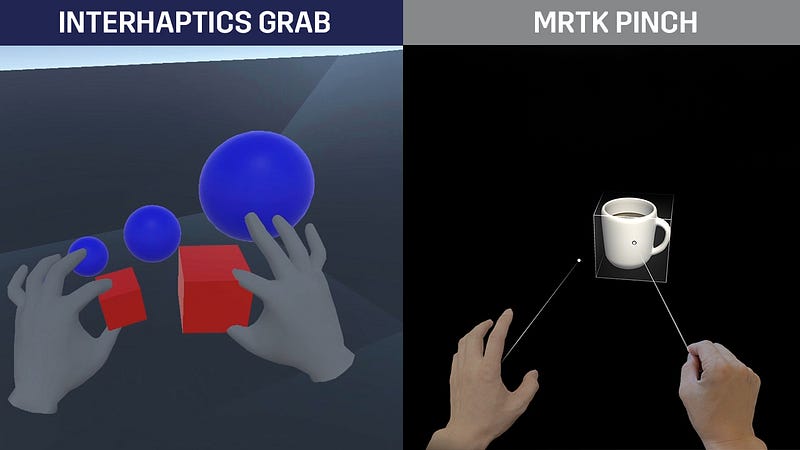

The Mixed Reality Toolkit (MRTK) is a reference in the world of hand interactions tools for VR/AR/MR, and specifically for Hololens. It is a solid system working on many platforms and providing various tools to help you create your XR experience.
However, depending on your project it might not fit properly with your expectations or needs. Today we will discuss some key points of MRTK, while comparing them to their opposite key points from the Interaction Builder by Interhaptics.
These two hand interactions tools for VR/AR/MR share many features but they also strongly differ in term of concepts and what they are built for.
Specifications of MRTK & Interhaptics
Let’s start by explaining the main difference between MRTK and Interaction Builder: the kind of content you can use it for. Indeed, both are for “interactions” in XR, but it is not the same concept of “interactions”.

MRTK is useful to create interactive content as a human-machine interface (HMI), focused mainly on UI, distant interactions with pinchs, and displacement in the VR world. Moreover, MRTK is using the XR world and its lighter constraints (compared to the real world) to expand the way you interact with objects.
On the other hand, the Interaction Builder is a hand interactions tool for VR/AR/MR based on hand manipulations(hand tracking, partial snapping, grabbing), focusing mainly on reproducing how humans interact with objects in real life. How the hand works while interacting is a fundamental pillar to recreate realistic interactions in a virtual world.
In terms of complexity and learning curve, MRTK is an older product, therefore it includes a lot of features. However, an overload of functionalities can slow down the development process.

MRTK architecture (source https://microsoft.github.io/MixedRealityToolkit-Unity/Documentation/Architecture/Overview.html)

Interaction Builder architecture
MRTK is a hand interactions tool for VR/AR/MR with a complete architecture. Developers can use this architecture to create their own systems. However, such complete architecture leads to complexity for simple use cases. Indeed, you must understand the structure of MRTK to work with it.
On the contrary, the Interaction Builder is a ready-to-use tool, with a smaller and simpler architecture. This is because it is focused on a specific application. You do not have to understand how the tool is built to use it. Moreover, you are not limited because you have open API access if you want to expand the tool.
The two hand interactions tools for VR/AR/MR provide instruments for the developers to add data providers. This enriches the list of devices that are compatible with the tool. Technically, any kind of device can be plugged into both. The main difference here is that the Interaction builder is a bit more flexible in terms of switching between platforms of deployment. Instead, MRTK has a whole framework to handle the input as part of your application, with very detailed features which give you full control of what you want to do.
If you are looking for a great UI tool for XR, MRTK is definitively the one to go for. It provides a lot of functionalities and prefabs, for almost any kind of UI application you could think of. However, if you are looking for an application with interactions based on hand manipulation, the Interaction Builder will offer a stronger touch of realism. The table below summarizes the main differences between the two hand interactions tools for VR/AR/MR.

Ready to try? Extend your reality now by downloading our Hand Interaction tool for VR & MR package. Check our last blog post here for more news.







